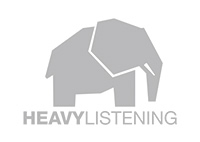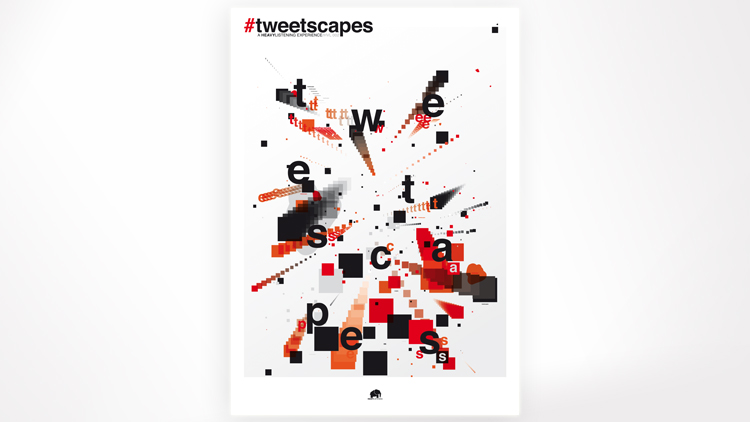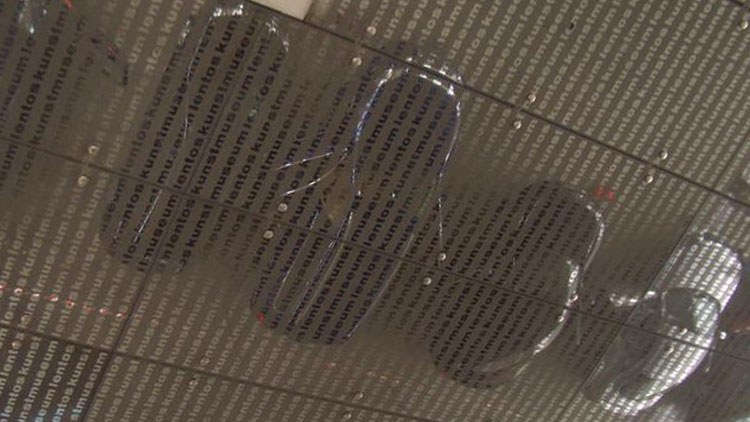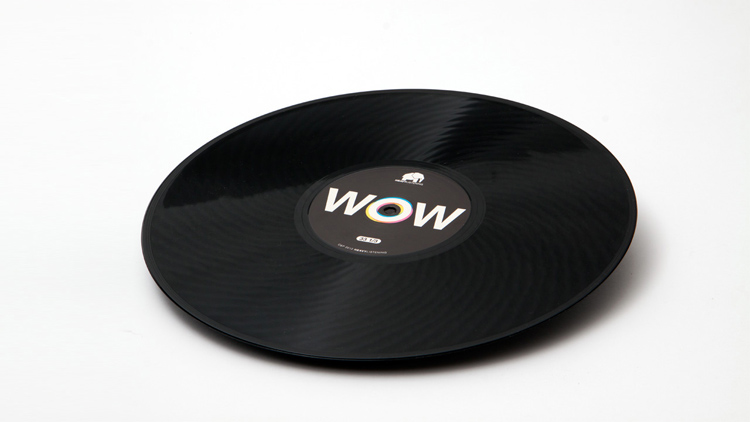
How #tweetscapes works.

#tweetscapes converts all* German tweets into sounds and images – in real-time, immediately when they have been posted.
To do this, we constantly receive the latest tweets directly from Twitter – including further information relating to the topic, the sender, the location and much more.
The Twitter data is then converted into sounds and pictures using a specially developed algorithm, and the result is streamed to this website. This whole process only takes a second.
Let's take a look at the details.
Everything in its right place.
A very close tweet, and then a very distant one from the west. The listener – that's you! – is located in the center of Germany.
Each individual tweet creates a simultaneous acoustic and visual event. This is represented on a map of Germany depending on the location of the sender – and also spatially classified in the acoustic stereo image.
Tweets from the west of Germany sound more on your left speaker and tweets from the east more on the right. The further away from the center of Germany a tweet has been sent, the softer and more reverberant it will sound, making it appear to come from the distance.
Different types of tweets will produce different types of sounds and images. Let's take a closer look at this.
#topics
Most important for the #tweetscapes concept are those tweets that can be assigned to a specific topic. As a semantic analysis of all of the tweets is not yet possible in real-time, a check is made to see whether or not the tweet has been categorized with a thematic keyword, a #hashtag. If this is the case, the algorithm produces a characteristic sound which can only be generated with precisely this #hashtag.
#trending
If a particularly large number of tweets are posted within a short period of time with the same #hashtag – because a lot of people are tweeting simultaneously on the same topic –, then a continuous background sound is additionally created, which is related to the corresponding #hashtag sound. In this way a recognizable soundscape is formed, generated by the dominance of one specific topic. If various topics are being discussed at the same time, a number of background sounds will appear simultaneously.
This is the sound a tweet including a certain #hashtag makes.
And this is a totally different #hashtag. Sounds different, too.
When that first #hashtag becomes a trending topic, it sounds like this.
And when everybody's talking about that second topic, this is what's happening in the background.
Got it? Great.
There's more, though.
@replies
Some tweets, so-called @replies, are directly addressed to a user, but are also publicly visible. These tweets are dealt with separately. They sound like constantly changing whispers, in order to reflect the intimacy of these more direct conversations. The conversion also takes into account whether the tweet relates to a question or a positive or negative comment.
Did you know?
If you listen to #tweetscapes at night, you'll hear much more whispering than during the day. Seems like also on Twitter that's the best time to get intimate.
Some examples of the whispering @reply sounds, getting more excited towards the end.
Chit-chat
Tweets which include neither a #hashtag nor a direct recipient fall under the category of “chit-chat” – the background noise of the social network so to speak – and initiate short, generic sounds and little white flashes in the visualisation. In sum, these sounds provide information about the total current activity on Twitter.
The number of followers – subscribers – of a user has an impact on the intensity of these sounds, so that comments made by extremely popular Twitter users also stand out on #tweetscapes.
Several users chatting away about no specific topic. One of them seems to be quite popular.
Re-tweets
Twitter’s mechanism of directly forwarding a message (or re-tweeting it) also has its counterpart on #tweetscapes: Visually, an arrow points from the original to the re-tweet, whereas on the acoustic level, a cloud of echoes becomes thicker and thicker with the increasing popularity of the tweet, which is reflected in the number of its re-tweets.
And if you wonder about those colourful circles everywhere – they also originate from re-tweets: The more successful a tweet is, the longer it takes the circle to fade away. Red circles are re-tweeted #hashtags, white ones come from chit-chat. After a while, they turn blue.
Two examples of forwarded messages. The first has only been re-tweeted a couple of times, while the second one is a real hit.
All together now.
Let's see what we've learned. In this short excerpt from #tweetscapes something interesting happens: one trending topic is being replaced by another. You've heard both before. Do you recognise all the sounds?
Congratulations,
you are now fully qualified for listening to #tweetscapes.
If you still have questions, you might want to
browse the FAQ or just send us an email.
HEAVYLISTENING was founded in 2011 by Carl Schilde & Anselm Venezian Nehls.
They create and curate award-winning sonic experiences.






